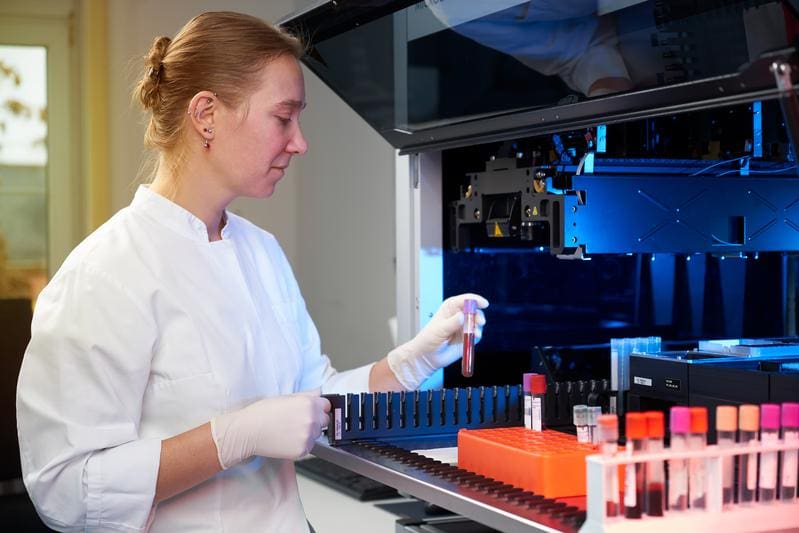Laboratory values: Uric acid also linked to cardiovascular risk in the normal range
A study by the University Medical Center Halle shows that uric acid levels in the blood are associated with increased vascular stiffness and therefore a risk of cardiovascular disease, even if they are within the normal range. The study, published in the journal BMC Medicine, is based on data from over 70,000 participants in the NAKO Health Study and shows that this correlation is more pronounced in women.
The study was conducted by an interdisciplinary consortium from the fields of physiology, nephrology, biometrics, biobanking and digital research methods. The researchers analyzed the uric acid concentration in the blood serum of people aged between 19 and 74 and compared this with pulse wave velocity values, a measure of vascular stiffness. Although nine out of ten participants had uric acid levels within the normal range (women: 140-360 ┬Ąmol/l, men: 180-420 ┬Ąmol/l), there was a recognizable correlation with vascular stiffness. An increase in uric acid of 100 ┬Ąmol/l corresponded to vascular ageing of around seven years in women and four years in men.

According to the researchers, the results call into question the current limits for uric acid and suggest that these should be tightened. Particularly in women, who have a lower pulse wave velocity, preventive therapy with uric acid-lowering medication could also be useful in the normal range, especially in the case of other risk factors such as obesity or metabolic diseases. Gender-specific differences in uric acid excretion and molecular signaling pathways could explain the stronger effect in women.
Using machine learning (Random Forest), uric acid levels were also identified as a significant risk factor for vascular stiffness, ahead of smoking, long-term blood glucose or alcohol consumption. The study provides a mechanistic explanation for the link between uric acid and cardiovascular risk, but causal evidence is still lacking. The research team is planning further investigations, including experimental studies with vascular cell cultures and a follow-up study with 7,000 participants in the NAKO study to analyze additional parameters and developments over time.
Original Paper:
Editorial office: X-Press Journalistenb├╝ro GbR
Gender note. The personal designations used in this text always refer equally to female, male and diverse persons. Double/triple references and gendered designations are avoided for the sake of better readability ected.




